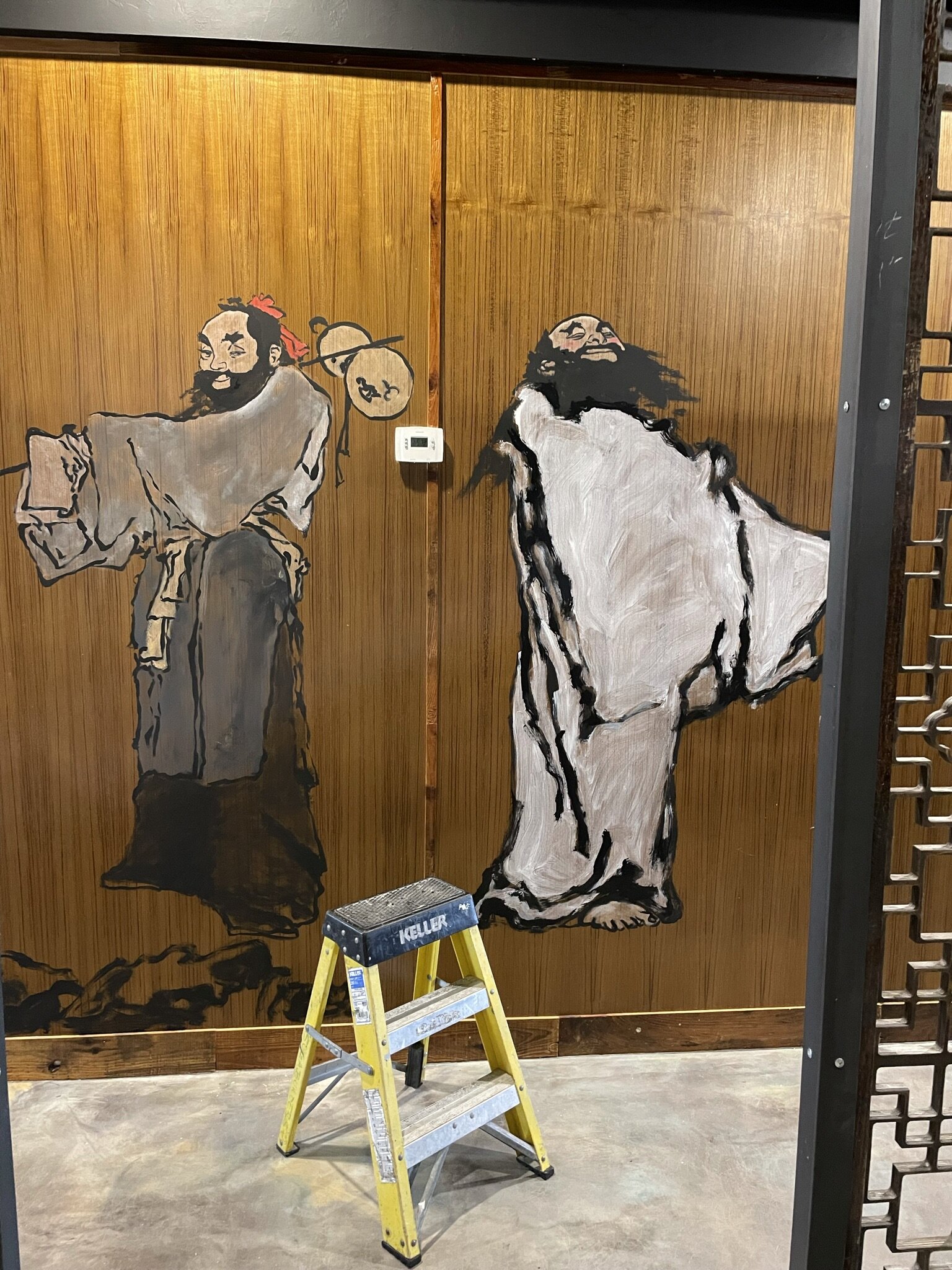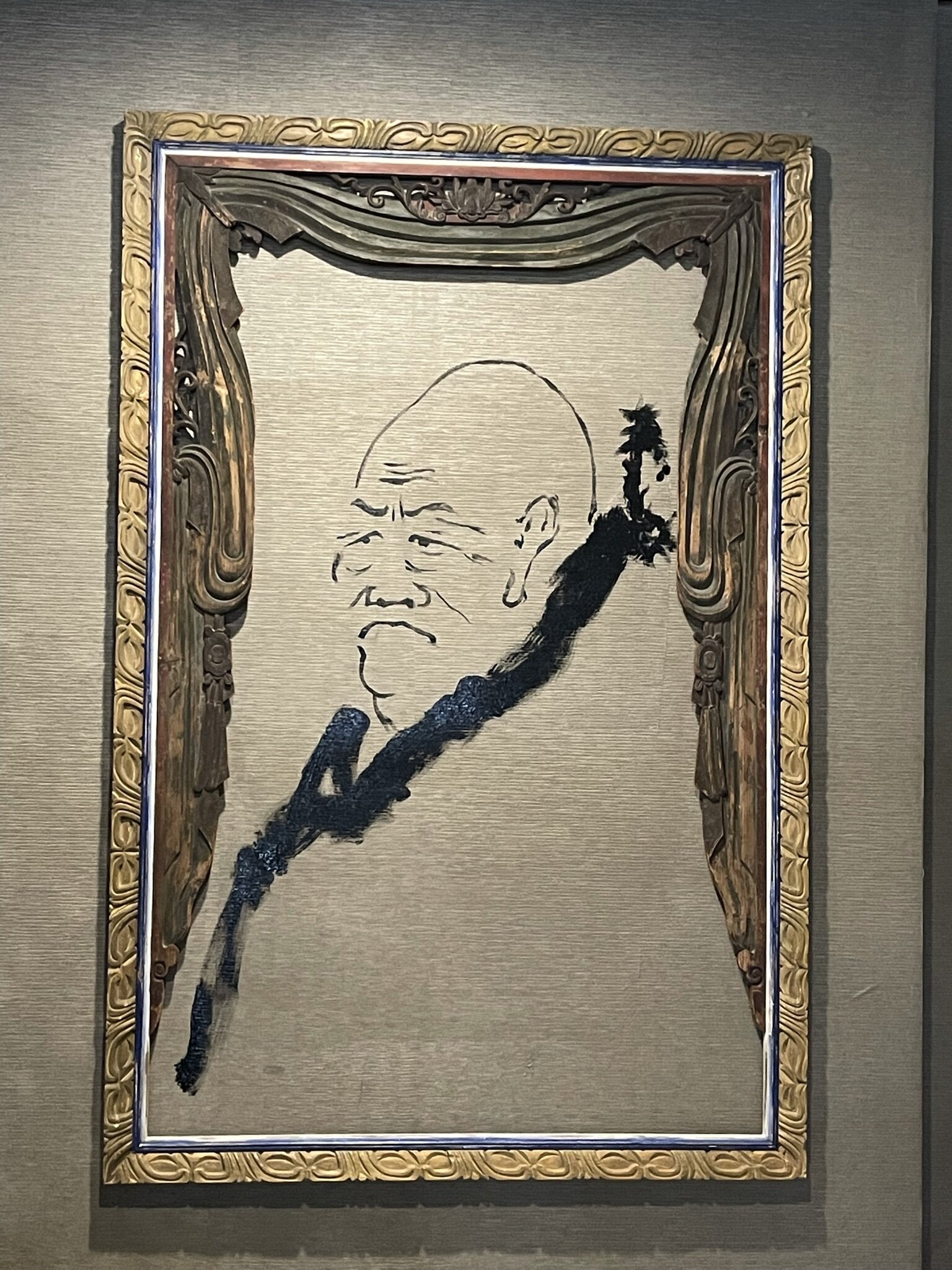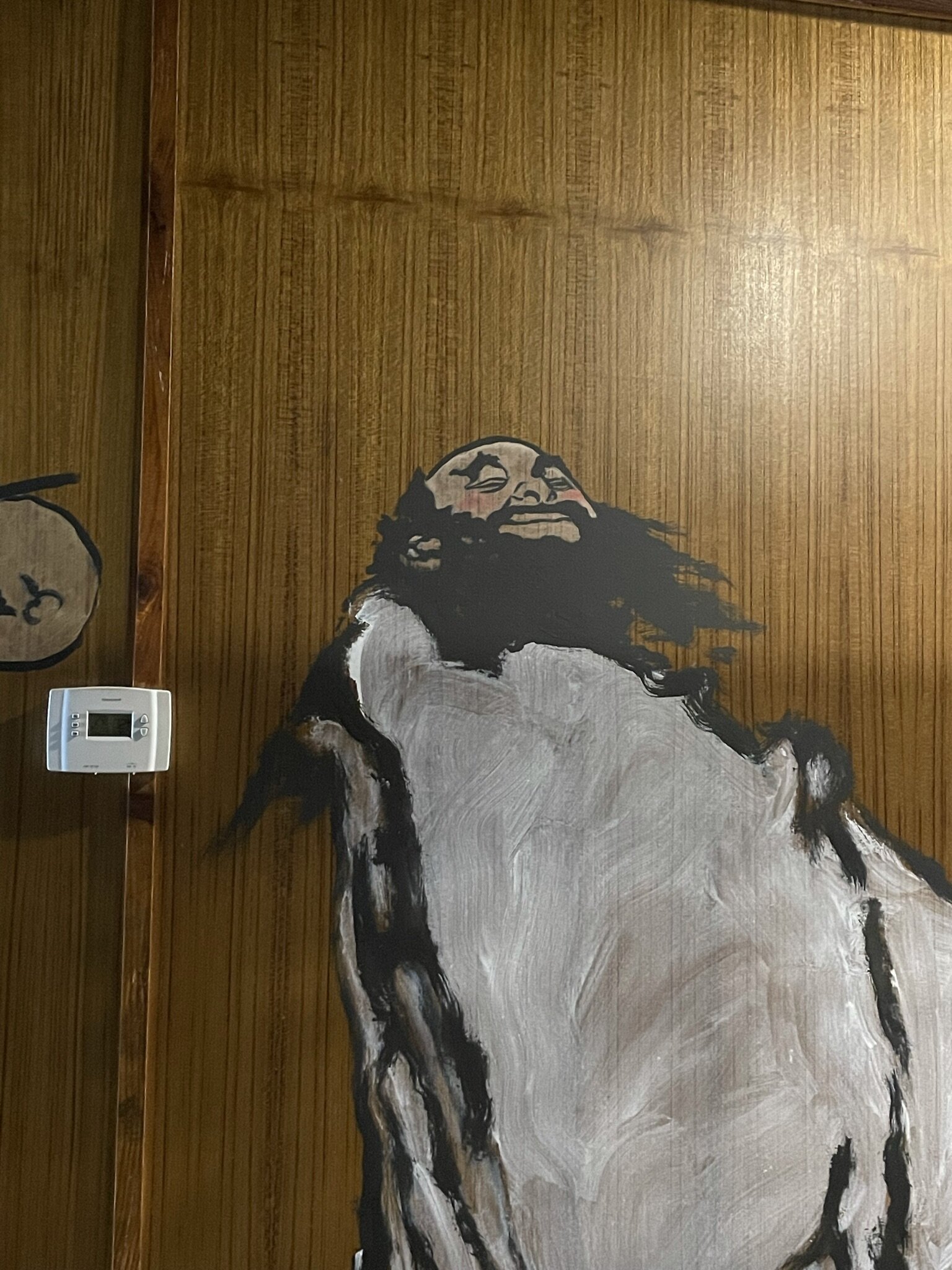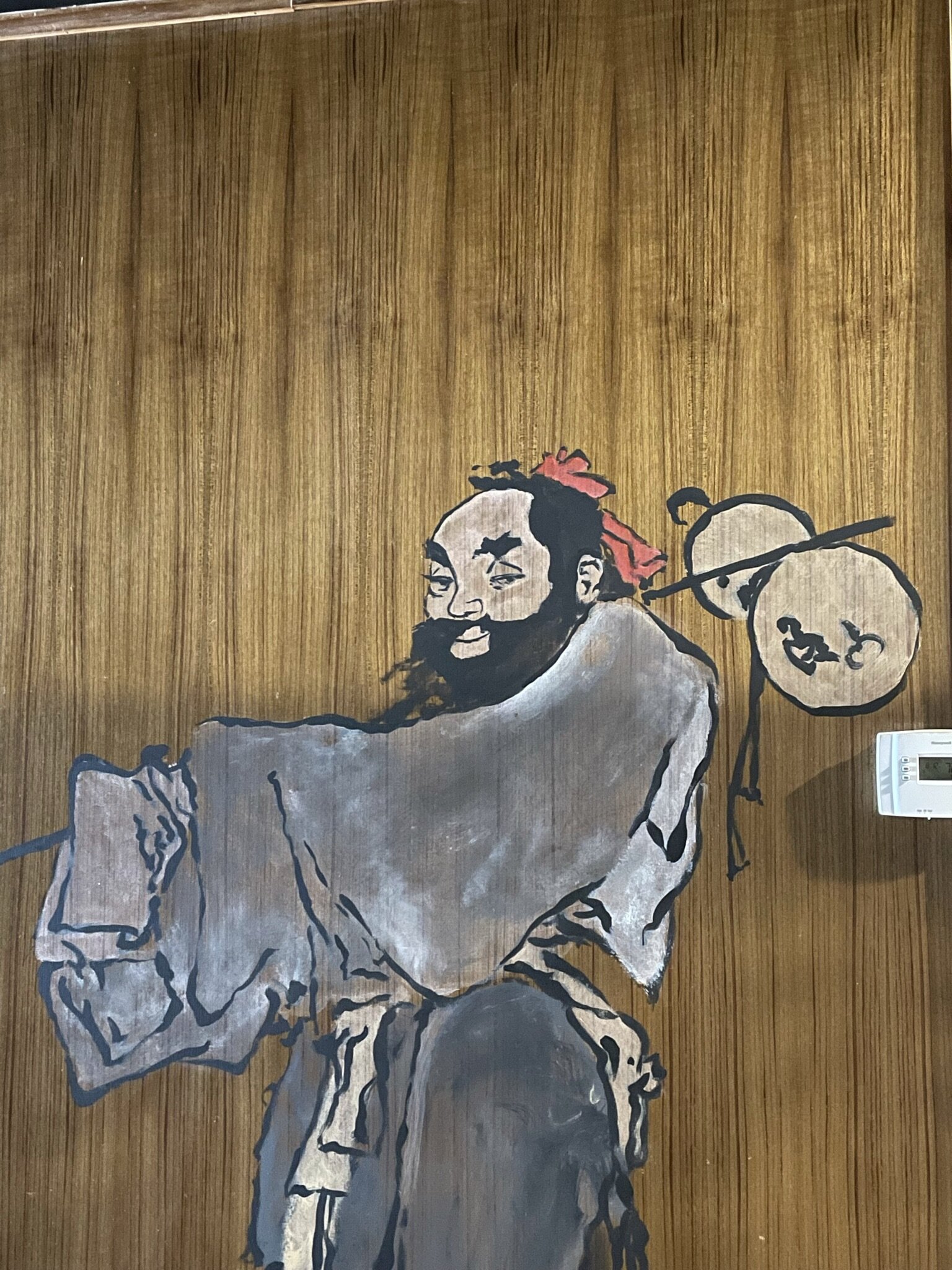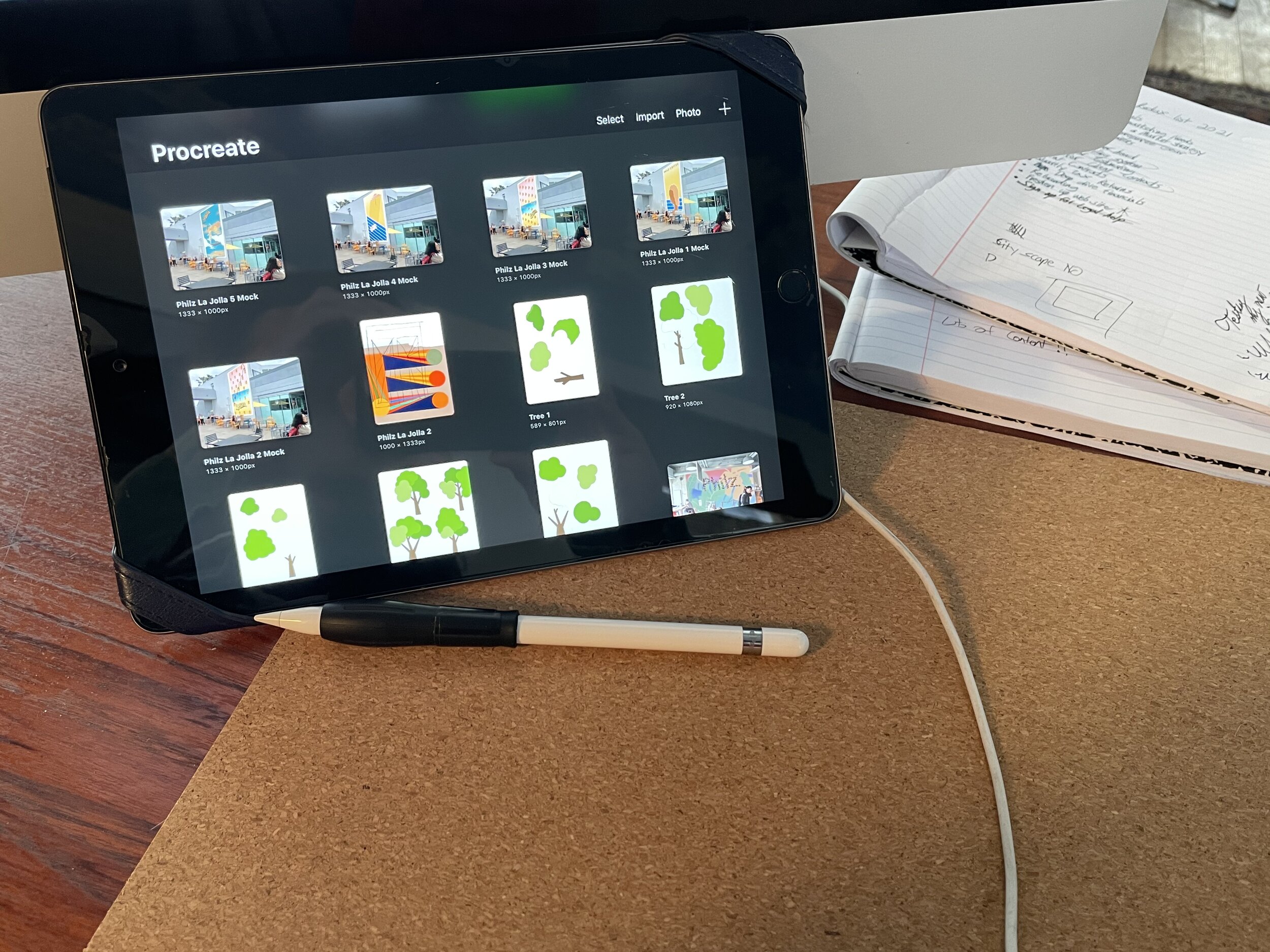Turning Walls into Worlds: The Nursery Mural How-To
Bay Area Nursery Mural
Hey! So, you saw that mural pic, right? Painting one is pretty straightforward, but totally transforms the room. Here’s how it’s done:
Sketching It Out
First, we map out the scene on the wall. Think of it as the rough draft in a sketchbook – it’s where the magic starts. Hills, trees, rivers – they all start as simple lines.
Coloring the Canvas
Next up, painting! It's like filling in a coloring book, but on a larger scale. We mix colors to get those soothing shades of green, blue, brown, and a hint of gold. Each color sets the mood, kind of like how a good playlist sets the tone for a road trip.
Detailing Time
After the base colors are on, we dive into the details. This is where a blob becomes a bird, and a stroke turns into a stone. It’s the part that takes the most patience – like putting together a thousand-piece puzzle.
Final Touches
Finally, when all is painted and dried, the protective tapes come off, and there you have it: a wall that’s not just a wall, but a window to an enchanting landscape.
It’s about making the nursery a place where stories begin, with every glance sparking a little one’s imagination. And if you're thinking about doing this, I say go for it. It's less about being an artist and more about creating a space that feels good – for you and the kiddo.
So, how about it? Ready to make that nursery or any room a bit more magical? Let's chat about it, and maybe even make it happen!
How Much Does a Mural in the Bay Area Cost?
Here you will find an answer to how much a mural costs in the bay area.
Below are the factors that affect the final price of having your mural hand painted in your school, business, or home.
Size:
Size is a significant factor. It is probably pretty obvious, but the larger the area being painted, the longer it takes. It comes down to the adage: time is money. The size makes up about 30% of the total cost.
Wall surface texture:
Another common mural price factor is the wall's surface texture. Hand painting can be slowed considerably by a rough and matt surface texture. Luckily there are tricks of the trade that allow for hand painting on these surfaces, but they can be time-consuming. The percentage for a very bumpy texture can increase the price by as much as 25-35%.
Timing:
Working around regular business hours, like after 5 pm or on weekends and holidays, is often necessary. These unusual working hours also factor into pricing. It is not uncommon for a 10% increase in price if unusual hours are needed to complete a project.
Design choice:
Some lmurals are straightforward, and some can be very complex. This complexity is another significant factor when determining the cost of having a mural painted. The design complexity is the most considerable percentage of the cost. The complexity makes up about 60-70% of the final price.
Height:
The last factor I am adding is the physical location of the mural. Often temporary scaffolding can be used, which is relatively cheap, but sometimes man lifts are required to access the desired height. These lifts generally start at 600 dollars a day, but weekly rentals bring the price down to earth, costing around 1400$. Height usually factors less than other elements of the hand-painted sign cost and is about 15-25% of the cost.
Average price breakdown:
The average price for a mural is about 2500$. However, the above factors can significantly affect the project total. If the mural is small, uncomplicated, and on a flat texture, the base cost can be as low as 800$. Huge complex murals requiring man lifts can go up to as much as 15,000$
Feel free to call or email us if you want to explore your mural project. We will discuss your project and provide an accurate estimate free of charge. We have been painting murals in the bay area for over ten years and have the skills and professionalism to complete your project on time and on budget.
Phone: 760 803 8045
Email: bayareahandpaintedsigns@gmail.com
Minimal by design
Wisteria is a genus of flowering plants in the legume family, Fabaceae (Leguminosae). It makes for great murals. This one is minimal by design. I love the wispy feeling this work evokes. I did this one for a man named Tad in berkeley. I always thought his name was cool.
#mural #murals #muralart #muralpainting #wallmural #muralist #muralsdaily #wallmurals #muralarts #artmural #painting #wallart #artist #workplace #vinylgraphics #graphicdesign #walldecor #wallgraphic #walldecor #wallpaperprint #customwallpaperprint #walldecal
Sometimes all you need is a simple bit of text to enhance your workplace.
Sometimes all you need is a simple bit of text to enhance your workplace.
This project uses custom wall vinyl and paint.
Another Inchin's Mural is all wrapped up
One of my fav clients sent me to Chicago to help spruce up there newest location. Check out a Inchin's Bamboo Garden near you!
One of my fav clients sent me to Chicago to help spruce up there newest location. Check out a Inchin's Bamboo Garden near you!
Procreate Blog Series Intro
Hey all! Today I am going to start out the first in a series about how I use the app Procreate with my ipad and Apple pencil.
Before I had this tool mockups were slow and cumbersome. I used to have to use the wacom tablet/photoshop combo. While it was faster and cleaner than actual painting mockups it was not nearly as intuitive as an Ipad and Procreate. Clients always want to see a mock-up and an estimate before a job is green-lit. Procreate is so fast at mockups it allows me to show the client something in a day or even sometimes a few hours. There is so much I want to talk about with this app that I have decided to break it up into a series and in later instalments I will do some quick tutorials. Below is just a quick example of how I incorporate this tool into my workflow:
Client calls and requests a mural or sign.
-First I need pictures of the space and ideas about the sign or mural content
-I then bring both images into Procreate
- Next I create a mockup design
- After the design is finished I place that design on the image of the space
- A quick send off for the client’s thoughts and suggestions
- Lastly we make adjustments and get final design approval
But wait there's more!!!
-I schedule a project time and gather supplies
-I then use Procreate and a projector to trace onto the wall.
-While painting I have the procreate design with me for reference throughout the rest of the process
I am constantly finding new and amazing uses for this app. I am by no means an expert at Procreate but I have found some things useful and in this series I want to share them with you.
Dispose unused paints the right way!
Dispose unused paints the right way!
Throwing paint in the garbage is nasty! If it is oil paint it is down right criminal! It may be easy, especially if the paint can is almost empty or dried, but don’t do it! A lot of states allow water-based latex paint to be thrown away in the trash once solidified, but I just can't bring myself to do it.
Taking your paint to a hazard waste facility is the best way to keep the environment clean. This method also has an added benefit of providing good paying jobs. Lastly visiting a hazardous waste facility allows one to properly dispose of other chemicals you may have laying around the studio or house.
I have a place in my studio where I keep empty or unused paint in a protective cabinet clearly marked. Even though it is latex paint and not particularly dangerous it makes me feel better knowing it is as safe as possible. Once a year in the spring I make an appointment with my county hazardous waste facility and load up my truck.
Here are some places you can look for your paint disposing needs:
https://earth911.com/recycling/
Techniques for sharp edges when painting freehand
At one point in our collective history the most advanced way of applying paint to a surface was the simple finger. Nowadays we have about a zillion different methods. In this post I am going to briefly discuss one of these methods, the bristle. Specifically I will discuss how I use brushes to achieve sharp edges on large scale logos and murals.
Painting “freehand” on a wall is very tricky and can take years to master. For me it all depends on the relationship between paint consistency, bush design and wall texture. The important factor for brush design is that the brush holds a lot of paint in the bristles, holds them predictably and releases them reliably.
First I load the brush with paint. Then scrap some paint out of the well and feel the brush for weight. At this point I have a good understanding of where the paint is sitting in the brush. The next bit is the tricky part. Slowly I pull the brush toward the marked line and watch as the paint flows. If too much pressure is applied it will bleed, not enough paint and it will need a second pass. It is a slow process but can also be meditative if one can start from a mindful place. It takes practice to move quickly using the freehand method. Go slow at first and eventually it will be second nature.
My favorite brush to use for straight lines is from Proform. Their Picasso series brush is by far the best for getting perfectly sharp lines. The acid dipped tip releases the paint perfectly every time. Because of the oval shape the paint stays in the well of the brush and comes out smooth and predictably.
I hope you found this article helpful and If you have a project that requires sharp lines and need assistance please reach out!
Texture and Its Challenges
The big trend these days is to apply a vinyl printed sticker on a smooth office wall or glass. While I will not go into detail about the advantages and disadvantages to this process here, I will say that it is not very effective when a wall has even a small amount of texture. Wall texture is a big reason clients find use for my services.
To achieve a nice sharp edge on a textured wall is extremely challenging and time consuming. I employ a few techniques I have learned and will briefly describe them here.
The first is Frog tape. This special tape secrets a tiny amount of glue foam at the edges once it has been applied. This prevents paint from being sucked underneath gaps caused by the wall texture. It is an absolutely magical product that saves tremendous time and energy.
Second, is good ol fashion steady hands. A lot of time it makes sense to paint by hand. It is a skill not all can master. Using patience and a practiced technique I am able to apply paint on a wall with heavy surface texture.
Spray painting a stencil is another long practiced solution although it has its limitations. Over spay and bleeding can occur which make this method only viable in specific situations.
These are the main ways I am able to achieve a clean professional look on stubborn brick concrete and other textured wall surfaces.
If this is a problem you are facing please reach out and we can find the solution that works for you.
Rolling it out!
Today I want to discus how I utilize rollers to help me paint murals. It can be really nice to see the paint go up so fast and I have found that it is a great way to engage your body in the early stages of the paint process.
Today I want to discus how I utilize rollers to help me paint murals. It can be really nice to see the paint go up so fast and I have found that it is a great way to engage your body in the early stages of the paint process. This can come in handy especially if you are not totally sure where the project is going. There are a zillion aspects to fully comprehend the roller technique. House painters have figured out all kinds of tricks and tips over the years. I am only going to talk about the stuff I have found useful in my work.
Nap is what they call the thickness of the roller pad. Some are thick and apply extreme amounts of paint and some are very thin, subsequently applying thin doses of paint. The difference is based on how textured (or rough) the wall surface is. For example, stucco needs a very thick nap. Dry wall uses a normal–thin nap. I usually have a few of each type in one of my totes at any given time. I do not roll out walls for every job so I am not particular with the brand. Usually I just grab the value pack at my local paint store.
Most of the time I am not painting full walls but smaller sections of the wall depending on what the specific artwork calls for. For that reason I recommend getting a few of the smaller 4 and 6 inch rollers. They are great at blocking in smaller sections. You can certainly use a brush for this, but there are some great advantages to using a roller. Rollers apply a thin even coat, this can save money by not using too much paint and time by reducing the need to brush on large sections.
There are some accessories to roller painting I find super helpful. A two-foot extender is a must. They screw on the bottom of your roller and allow you to use new and exciting muscle sets. Very important! You can go to your local paint store and buy a new one, but I recommend you search for one at a flea market or an estate sale. Why is this? The feel of a wood extender that has seen many paint projects has an effect on my subconscious. I know in the back of my brain somewhere I am feeling all the projects that came before. It is a simple thing to feel but all the little things add up. Also they don’t really break. The same goes for trays and cleaners. The trays they made 40 years ago are rusty and old but they still work just fine. Throw a coat of primer on them and they are as good as new. The plastic ones are junk and made for one use. Don’t buy them. They also make this tool for cleaning the roller. This is what mine looks like. To use it, you just sort of squeegee off the paint and wash like a normal brush. Pretty handy eh.
The fan method of roller painting is pretty useful I also feel it comes pretty intuitively. That’s where you just fan out subsequent roller passes so that paint does not just sit at the two edges. This happens because paint gets squeezed to the two sides as you apply pressure. If you fan out your passes you can pick up the access paint and apply it to another section of the wall.
Blending and artistic uses for rollering are not so easy. I have experimented with multiple colors in the tray and attempting color fades using a roller. Both experiments left me going “yeah that’s never going to work”. Ultimately there is just not enough control. I have seen it used as a giant marker to make letters and designs. I find that this always looks somewhat loose. It has an unfinished quality to it.
Rollers are a must if you have a mural painting business. Hopefully these tips will help you and your future mural projects. Okay well that’s all I have on how I implement rollering into my mural practice. Hope you found it somewhat interesting and keep rollering!








